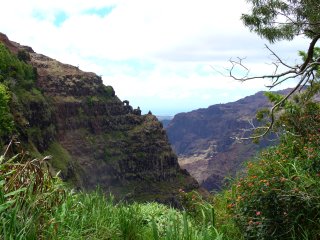I’ve heard it said Twain is the most-oft quoted person in the world next to Shakespeare, but I find that hard to believe. You mean the wisdom and philosophy of Twain beats that of Jesus? Buddha? Confucius?
Even when I’m not researching Twain, I can’t seem to shake him, and you know, sometimes I just want a break. Sometimes, I don’t want to take work home with me. Sometimes the last name I want to hear--or read--is Twain. And, then, I receive an email or open a magazine or crack open the work of a contemporary author and there it is--yet another Mark Twain quote. It's like I'm getting a glimpse of the old geezer’s backside—white hair flying, laughter trailing and a hint of that stinky cigar--as he wobbles around a corner. And I want to yell, “Just leave me alone, will you?”
Then, I remember he was the first American to give American letters its own voice. Until Twain arrived on the scene with The Adventures of Tom Sawyer in 1875—which has never once gone out of print since—America played second fiddle to those blokes across the pond. James Fennimore Cooper. Herman Melville. Nathaniel Hawthorne. Just Englishmen in disguise. Twain himself was less than impressed with one—James Fennimore Cooper—penning these words, “Cooper's art has some defects. In one place in Deerslayer, and in the restricted space of two-thirds of a page, Cooper has scored 114 offenses against literary art out of a possible 115. It breaks the record.”
On one hand, it seems Mark Twain is a household name, and, yet, I’m learning, not as well-known as I might think.
When I spoke with the PR agent for the Oahu Visitors Bureau a couple months ago and explained the purpose for my research trip to her island, she was ecstatic and wanted to house me in an historical Honolulu hotel that borders lands once owned by the family of Princess Kaiulani, good friends, she said, with Twain who entertained the young, 13-year-old princess with tall tales.
Now, I’m all for trying to re-enact Twain’s journey—walking in his footsteps, laying my head close to where he may have slept, conjuring up the mana of his Hawaii friends—however, I was fully aware Twain did not talk story with Princess Kaiulani, did not visit her palatial estate, and was, most certainly, not even an acquaintance of her, because Mark Twain visited Hawaii in 1866, and Princess Kaiulani was born in 1875. It doesn’t take much research to get to the bottom of that one. Another American writer of distinction—Robert Louis Stevenson—did visit Kaiulani, did entertain her with stories and did stay at a nearby residence. Some 22 years after Twain’s visit.
By the time the PR representative caught her mistake, I was already granted and graciously accepted—as I’m sure Twain would have—a two-night stay at the Princess Kaiulani Hotel in Waikiki.
The Legend Twain
 Twain’s style of reporting from 1866 isn't what I was taught at the University of Missouri School of Journalism. There's seems to be a little invention in his journalistic writing, however, the intervening 140 years haven’t helped, either. In that time, the man that was Samuel Clemens morphed into a legend called Mark Twain, and I find legends—like fish stories—tend to grow with age. With Twain, it seems the fish are words. Any clever remark or witticism sticks to Twain. Take, “The coldest winter I ever spent was a summer in San Francisco.” There is no record of Twain’s saying or writing this, although he did write something similar about Paris.
Twain’s style of reporting from 1866 isn't what I was taught at the University of Missouri School of Journalism. There's seems to be a little invention in his journalistic writing, however, the intervening 140 years haven’t helped, either. In that time, the man that was Samuel Clemens morphed into a legend called Mark Twain, and I find legends—like fish stories—tend to grow with age. With Twain, it seems the fish are words. Any clever remark or witticism sticks to Twain. Take, “The coldest winter I ever spent was a summer in San Francisco.” There is no record of Twain’s saying or writing this, although he did write something similar about Paris.In Hawaii, Twain is credited with dubbing the Waimea Canyon on Kauai as “The Grand Canyon of the Pacific.” It isn’t nearly as inventive as the San Francisco one, but it sticks. I’ve read it in dozens of travel essays, on websites and in promotional brochures. I’ve heard it from tour guides, flight attendants and even my Hawaii neighbors. The irony is I can’t find a thing he writes about the Waimea Canyon. In fact, he doesn’t write word one about Kauai in any of his dispatches published in the Sacramento Union. Not a single simile about the island’s superlative garden beauty, its verdant valleys, its vertical cliffs of Na Pali Coast, nor its great gash in the ground. Did he ever visit Kauai? If not, how could he have made the comparison? And, if he didn’t, who did?
Now I’m starting to question that monkeypod tree on Big Island. The one he supposedly planted 160 years ago. It’s awfully small, considering, yet there’s a Hawaii Visitors Bureau sign identifying it as the “Mark Twain Monkeypod Tree.” I’ve yet to read any mention of it in his writing, either. Sounds like another Twainism to me.
It’s a bit elastic, this truth thing, especially when it comes to the Legend Twain. I’m particularly interested in learning where I end up with it—truth. The truth in Twain’s journalism. The truth of Twain’s Hawaii. As for Twain, will my feelings of him or his writing change? Will my idea of writing or journalism change? And what about my relationship with Hawaii? How will that change as a result of this journey?
Subscribe to:
Posts (Atom)